

ON THE COVER PAGE 12



ON THE COVER PAGE 12








619 Roofing
Agricultural Pest Control Services
Antis Roofing & Waterproofing
Associa N.N. Jaeschke
Black Diamond Paving
Choice Management Solutions, Inc.
Community Legal Advisors, Inc.
Delphi Law Group, LLP
Dunn Edwards Corporation


AD Magellan
Allied Trustee Services
The Arbor Group
Association Reserves
Bemus Landscape
Ben’s Asphalt, Inc.
Berding Weil
Bergeman Group
Construction Management
BrightView Tree Care
Eagle Paving
Fiore Racobs & Powers, A PLC
First Citizens Bank
Goldstar Asphalt Products
Guard-Systems, Inc.
Harvest Landscape
Horizon Lighting
Kriger & Schuber
LaBahn’s Landscaping
Life Specialty Coatings
McKenzie Mena, LLP
Modern Masters Painting
Monarch Landscape Companies
The Naumann Law Firm, PC
Enterprise Coatings, Inc.
GuardTop, by Sustainable Emulsions
LandscapesUSA
Life Deck Coating Installations
Mason Construction
Mt. Helix Pest & Termite Control
Pacific Green Landscape, Inc.
Patioshoppers
Pride Plumbing, Inc.
Nautilus General Contractors
Nissho of California, Inc.
NPG Asphalt
Pacific Standard
Plumbing
Parking Squad
Premier Roofing California
PrimeCo
Rayco Exteriors
RealManage
Ross Construction Management
RSI Roofing
S.B.S. Lien Services
SavATree, LLC
SAX Insurance Agency
The Secret Ballot SERVPRO of San Diego City SW
SERVPRO of Sorrento Valley
Smartstreet powered by Banc of California
Tinnelly Law Group
Tree Life CA
Primus Paint Worx, Inc.
Pro Star Mechanical
SCT Reserve Consultants
Soundproof San Diego
Southern Cross Property Consultants
Trash Day Can Carriers
Vista Paint Corporation
Westlake Royal Roofing
WM of San Diego
PRESIDENT
Susan Hawks McClintic, Esq., CCAL Epsten, APC
PRESIDENT ELECT
Amanda Francis, CCAM-LS Renaissance Owners Association
VICE PRESIDENT
Tim Flanagan, Esq. Flanagan Law, APC
TREASURER
Liron Shalom-Hickey SERVPRO of Sorrento Valley
BOARD DIRECTORS
Sharon Deal
Vista Canada Estates
Amber Korody Choice Management Solutions
Bridgette Tabor LaBaree/Oksnee Insurance
Rei Takeda Normal Heights Community Association
Heather Wiltshire, CCAM, CMCA, AMS, PCAM N.N. Jaeschke, Inc. - An Associa Company
EXECUTIVE DIRECTOR
Carissa Mace executivedirector@cai-sd.org
COMMUNITY INSIDER PUBLICATIONS COMMITTEE
CHAIR
Carrie Heieck, Esq. Tinnelly Law Group, APC
VICE CHAIR
Rhonda Goldblatt, Esq. Epsten, APC
Rei Takeda Normal Heights
Community Association
Johanna Deleissegues, Esq. Adams I Stirling, PLC
Jordan Farmer, Esq. Flanagan Law, APC
Jeffrey French, Esq. Green Bryant & French, LP
Alma Galindo, CMCA, AMS Prescott Management
Elaine Gower
The Naumann Law Firm, PC
Brian Kalmenson, CIRMS Gemini Insurance Agency, Inc.
Tyler Kerns, Esq Kriger Law Firm
Kimberly Lilley, CIRMS, CMCA, EBP Berg Insurance Agency (In partnership with LaBarre Oksnee Insurance)
Jocelyn Luna Prescott Management
Anja Potenza Brightview Landscaping
Kumar Raja, Esq. Beaumont Tashjian
Shannon Smith
AD Magellan
Emily Whittemore, PCAM FirstService Residential
DESIGN & PRODUCTION REY ADVERTISING & DESIGN
Editorial and advertisements represent the opinions of the authors and advertisers and not necessarily the opinion of Community Insider Magazine or CAI San Diego. Information contained herein should not be construed as a recommendation for any course of action regarding financial, legal, real estate, accounting or other professional services and should not be relied upon without consulting legal counsel, financial and accounting professionals, or other expert business advisors.
CAI San Diego Chapter encourages submission of news and articles, subject to space limitations and editing. All articles submitted for publication become the property of the CAI San Diego Chapter. Non-commercial reproduction of published articles or columns permitted with the following requirement of acknowledgement “Reprinted with permission from Community Insider Magazine, a publication of CAI San Diego.”
ADVERTISING AND CORRESPONDENCE
Community Insider Magazine
CAI - San Diego Chapter
9920 Pacific Heights Blvd., Ste. 150, San Diego, CA 92121 858-836-1119 | www.cai-sd.org © 2025 CAI San Diego Chapter, all rights reserved. The official quarterly publication of CAI San Diego
The new year is here and off to a great start.
The Neon Nights Awards Gala was a “glowing” success! A big thank you to everyone who organized the Gala and created a fun celebration for CAI San Diego!
Congratulations also to everyone who was nominated for an award and to those who took home a trophy (see page 18). Your contributions to CAI San Diego are appreciated! I'm looking forward to building on our successes and growing our community in 2025
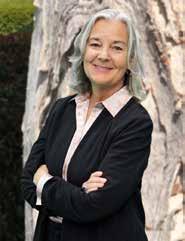
Susan Hawks McClintic, Esq., CCAL 2025 Chapter President
I have two primary goals for our chapter in 2025. My first goal is to continue our chapter's growth by creating a welcoming environment at our events. If you are new to CAI San Diego, haven't attended any in-person events lately, or just feel a little awkward about attending an event, let us know. We’re happy to connect you with another member at the event. We want everyone to feel welcome!
My second goal is to continue to provide exceptional educational opportunities to managers and homeowners. Through education, we will continue to elevate the effectiveness and value of our chapter members in their various roles in community associations.
Thank you for your continued support and participation in CAI San Diego!
Best Regards,

Susan Hawks McClintic, Esq., CCAL Epsten, APC


David Hinrichs


By Kelley Grimes, MSW

Anja Potenza & Michael Lockwood
Elizabeth A. French, Esq.
By Julie Russo, CCAM-ND
There is much to be gained from contracting with the experience and expertise of a professional management company. If the board acts as a “city council,” then management represents the “city manager.” Management’s role is essentially to advise and, more importantly, to implement the board’s directives. Management consults with the board based upon its experience and knowledge of the industry, and then acts to implement the board’s business decisions and policies, by supervising sub-contractors, channeling all board and association communications, and solving problems. To aid
with the process, the following are some basic elements of the management/board relationship:
Your community is a California Nonprofit Mutual Benefit Corporation and, as such, is a corporation that is managed/administered by the board of directors. It is not a democracy because the board of directors, not the Members or management, make the business decisions of the corporation. The board cannot delegate responsibility to Members by taking votes or polls on issues, although remaining sensitive to the community’s feelings is important for any successful board of directors. The board could successfully be sued for delegating its business decision-making duties to the Members.
If your association is incorporated it is registered with the State of California and the Franchise Tax Board. As duly elected members of the corporation’s governing body (the board of directors), board members have a legal responsibility to conduct business in accordance with state law and the association’s governing documents. They have a fiduciary duty (based on trust) to the members to always act in the best interest of the association. The members trust that board members will make informed decisions on their behalf and avoid personal or professional conflicts of interest.
Each board member is elected to serve on the board as an individual and as a member of the board acting as a group that makes decisions, sets policy, and accomplishes the association’s goals and objectives. The board should focus on policy and governance, while allowing management to focus on implementing the board’s policies and business decisions. Partnering with management, the board’s responsibilities include:
• Enforcing the provisions of your association’s governing documents;
• Maintaining the appearance and safety of common areas by contracting for services (i.e. professional management, utilities, trash removal, landscaping, etc.);
• Ensuring that adequate and appropriate insurance policies and bonds have been procured to cover losses to property and claims of liability by third parties;
• Adopting a budget by determining the annual assessment for each lot and notifying the membership prior to the beginning of each fiscal year as may be required by the governing documents and statute;
• Overseeing the financial aspects of your association, including regular review of the association’s assets, income and expenses, and reserve account status;
• Diligently collecting assessments from the membership, and pursuing past due accounts to the fullest extent permitted by your documents and statute;
• Engaging an annual review or audit of the association’s financial condition for distribution to the membership at fiscal year-end;
• Filing income tax returns and paying appropriate city, state and federal taxes;
• Conducting regular board meetings as prescribed by the bylaws and by necessity; and
• Generally, acting for and in the best interest of your association and its Members and avoiding conflicts of interest
At the first board of directors meeting (usually held immediately after the Annual Election Meeting), the first order of business will be to elect officers. The association membership elects directors, and the directors appoint or elect officers. Board member responsibilities at board meetings include:
• The duty to read the board packets and be informed on all issues before the meeting.
Continued on page 8
• Arrive on time or notify management of a planned absence.
• Make motions and/or vote on all motions.
• Make reasonable inquiries into issues regarding the association.
• Obtain competitive bids.
• Make new policies that are tailored to your association’s needs and enforce those policies.
• During a board member’s term, the board director will make decisions that affect every person living and owning property in the association, which includes potentially hundreds of people. In addition, board members are in control of property, common areas and buildings that may be worth millions of dollars.
Under the Business Judgment Rule, Courts will uphold board decisions if the board acts on an informed basis, in good faith and with the honest belief that the action was in the association’s best interest. If board members do not know the answers, they may reasonably rely on the advice of experts. If the Business Judgment Rule is followed, the individual director/board should not be personally liable for a mistake made in good faith that is intended to be for the benefit of the association. The person challenging the decision has the burden to show that the decision involved a conflict of interest, was made in bad faith, or without the required degree of care. It is important to reiterate that the board of directors is responsible for managing the association. It may delegate management functions and
certain corporate powers to others, but its acts are under the board’s ultimate control and direction. It is essential that boards partner with a professional management company, and rely on the expertise, guidance, and leadership of experienced community managers to ensure that the association is functioning as a legal corporation in good standing and in good faith.

Julie Russo, CCAMND, is Vice President of Community Management at Professional Community Management – An Associa Company. She can be reached at julie.russo@associa.us




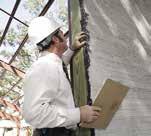

By Shannon Smith

Working in the HOA industry comes with its share of challenges. From navigating complex regulations to addressing resident concerns and managing competing priorities, it can be a tough environment in which to operate. At times, it’s easy to feel discouraged. However, this industry is also filled with passionate individuals and a wonderful network of professionals who remind us that working together as a team is often the best path forward.
Adopting conscious leadership practices, inspired by The 15 Commitments of Conscious Leadership by Jim Dethmer, Diana Chapman, and Kaley Klemp, can transform the way we lead, making our work more rewarding and our communities stronger.
By adopting conscious leadership principles, we can turn the inherent challenges of our industry into opportunities for growth and connection. Working as a team – grounded in trust, curiosity, and responsibility – benefits everyone and strengthens the communities we serve. Together, we can create a more positive and impactful experience for everyone.

Shannon Smith is Co-Founder and CEO of AD Magellan Construction Management and can be reached at shannon@admagellan.com.
One of the core principles of conscious leadership is shifting from blame to responsibility. When challenges arise—whether it’s a contentious board meeting or an unexpected maintenance issue—ask, “What role can I play in creating a solution?” This mindset fosters collaboration and sets the stage for others to take ownership of their contributions, building a more cooperative team environment.
In the HOA world, differing opinions are inevitable. When your decisions are questioned or conflicts arise, lean into curiosity instead of becoming defensive. Ask questions to understand the other person’s perspective. This not only diffuses tension but often uncovers creative solutions that serve the greater good.
Transparent and effective communication is vital in our industry. Commit to expressing your thoughts clearly and respectfully while also practicing generous listening. When others feel heard— whether they are board members, homeowners, or team members—they are more likely to trust you and work collaboratively toward shared goals.
Conscious leadership encourages a mindset of openness and possibility, known as “above the line” thinking. In contrast, “below the line” thinking stems from fear and scarcity. Regularly check in with yourself: Are your actions driven by curiosity and collaboration, or by fear and control? Shifting your perspective can lead to better decisionmaking and stronger relationships.
Our industry thrives on collaboration. Recognize the value of your network and lean on it for support, insights, and camaraderie. At the same time, prioritize self-care to prevent burnout. Whether it’s taking a break, setting boundaries, or encouraging your team to recharge, renewal is key to effective leadership.
Donald Bellisario MRoland Management Services
Sandra Beyroutey Choice Management Solutions, Inc.
Kayla Clark Strategic HOA
Vanessa Coles
A.R.K. Management Group, Inc.
Sara Davis Prescott Companies
David Drew Prescott Companies
Cindy Erno FirstService Residential California, LLC
Nicholas Eskey Seabreeze Management Company
Tracy Hanson Property Management Professionals
Lauren Holliman
A.R.K. Management Group, Inc.
Arthur Hopkins, CMCA, AMS, CIRMS Click2bind Insurance Services, LLC
Kavitha Kabaleeswaran Iconic Property Management
Jala Kalas
Julia Kunkel
FirstService Residential
Seema Makwana Strategic HOA
Anali Martinez PMP Management
Hugo Munoz Action Property Management
Alison Murray, CMCA
Patricia Terry Seabreeze Management Company, Inc.
Hillary Van Orden Walters Management
PMI San Diego Luis Arce, CMCA
Property Management Consultants, Inc.
Greg Grant
April Thomas and Associates, Inc.
April Thomas
7X, Inc.
Sosan Khalili
America’s Finest Lighting and Mailbox Co.
Rick Archer
California Commercial Coatings, Inc.
Heather Beck
Centric Building Services, Inc.
Tim Hoover
Costa Roofing
Ryan Roesch
eXp Realty of California, Inc.
David Balderas
Highland Commercial Roofing
Scott Nakayama
Major League Pest
Paul Wynhamer
Mason Reconstruction
Michael Zaboth
Modern Masters
Painting
A.J. Bernal
P.W. Stephens Environmental, Inc.
Sal Busalacchi
Pacific Standard Plumbing Curtis Hefner
Simply Voting Inc.
Brian Lack
TWM Roofing Inc.
Thomas Marshall
Premier Construction Management Group Angie Ray
Surf City Pools Dalanne Zanotelli
Terry Group Construction
Jonathan Terry
Wallrug DBA hoacta.app
Isaac Camacho
West Coast Drywall & Paint
Garrett Slater
Carlsbad Crest Homeowners Association
Chris Hunkeler
A.J. Romanelli
La Jolla Village Southpointe Homeowners
Association
Andrew Kirk
Mission Playmor
Jennifer Scott
Palisade Gardens Community Association
Brian Haghighi
Kara Taylor
Sea Village Owner’s Association
Ken Hirata
Summerfield Homeowners Association, Inc.
Daniel Carr
Donny Phonea
Denise Shield
Michael Spring
Maria Stein
Villa Dominique Courthome Association
Bob Derman
Nancy Diamond
Sandra Main
Mike Michaelson
Laurie Wagner
Debbie Wasserman
Villa Maderia Property Owners Association
Linda Fortney
LaRay Gillison
Antoinette Renfroe
Villa Mar HOA
Lisa Pieropan
Sathish Sankaranarayanan
Vee Yaneza

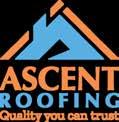





For over a decade, Jimmy Pettit and Reid Schneider have established a reputation for reliability, craftsmanship, and trust throughout San Diego County. At the heart of ProForm Interiors is a simple yet transformative philosophy: prioritize relationships – with clients, employees, and partners – and success will follow. This guiding principle is evident in every project, making ProForm Interiors more than a construction company; it’s a trusted ally for every building need.
ProForm Interiors offers an expansive suite of construction services, addressing the unique challenges of residential, commercial, and high-rise projects. With expertise spanning emergency services, general contracting, and renovations, ProForm is committed to delivering quality solutions tailored to each client. Emergency Services are a cornerstone of ProForm’s operations. When immediate action is required, the team responds with precision and efficiency. Flood mitigation prevents small issues from spiraling into extensive damage. Mold remediation ensures safety and health, while postmortem and drug room clean-up restores spaces to a usable state with sensitivity and
professionalism. Board-up services secure properties against further damage, offering peace of mind in the aftermath of unexpected events.
For HOA Building Services, ProForm is an invaluable partner. Common area repairs, leak detection, and restoration projects are handled with an understanding of the unique dynamics of shared spaces. Whether preserving the aesthetic appeal of a building or ensuring functionality, ProForm works with associations to maintain the integrity of these communal areas.
General Contracting and Construction Management at ProForm is marked by meticulous attention to detail and seamless coordination. Construction management ensures that projects run smoothly from start to finish, while skilled carpentry and interior finishing elevate each project beyond expectations. Through effective project management and comprehensive oversight, the ProForm team delivers results on time, within budget, and to the highest standards.
Interior Renovation and Remodel projects transform spaces into functional and inspiring environments. Whether addressing damage or revitalizing outdated areas, ProForm combines creativity

with practicality to achieve results that meet the client’s vision and exceed their expectations.
When it comes to high-rise re-pipes, few companies in San Diego County can rival ProForm Interiors’ expertise and experience. These projects demand precision, efficiency, and skilled craftsmanship to ensure timely and seamless execution – a specialty we’ve honed over years of dedicated work.
As many buildings approach the age where repiping becomes essential, choosing a trusted partner is critical. ProForm Interiors combines technical mastery, 100% in-house field staffing combined with a coordinated approach, making us the top choice for high-rise re-pipes. Let us help you protect your building’s integrity and functionality for years to come.
ProForm Interiors’ commitment to excellence extends beyond the technical aspects of construction. The company views every project as an opportunity to build relationships based on trust, communication, and mutual respect. From the initial consultation to
the final walkthrough, clients can expect a partnership characterized by transparency and genuine care.
This dedication to service is complemented by a forward-looking approach. By embracing emerging technologies and sustainable practices, ProForm continues to innovate, ensuring that its solutions are not only effective but also environmentally conscious.
From prominent high-rises to private residences, ProForm Interiors has left a lasting mark on San Diego’s architectural landscape. Each project reflects the company’s unwavering dedication to quality, from the smallest detail to the grandest design.
At ProForm Interiors, success is measured not just by the structures built but by the relationships forged along the way. It’s a legacy of trust, craftsmanship, and excellence that continues to shape the company’s approach to every new challenge. Whether responding to emergencies, revitalizing shared spaces, or transforming interiors, ProForm Interiors delivers results that endure –proving time and again why they are a name clients trust.
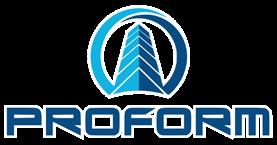
proforminteriors.com
Whether responding to emergencies, revitalizing shared spaces, or transforming interiors, ProForm Interiors delivers results that endure – proving time and again why they are a name clients trust.
By Kurtis Peterson, CMCA

Online voting has been a long time coming in California. Although California common interest developments can now take advantage of this voting method with the signing of Assembly Bill 2159 (AB 2159) into law, there are ambiguities in the new law and many new legal requirements that must be met.
AB 2159 provides that associations may allow their inspector of elections to conduct an election by electronic secret ballot. Keep in mind that voting by email is not, and cannot, be secret. Electronic secret ballots must be cast via an internet-based voting system and the inspector of election must ensure this system conforms to the requirements set forth in Civil Code § 5110(c)(4).
Online voting is the way of the future. Online voting provides many advantages: enhanced participation; potential cost savings; real time results; and the ability to vote from anywhere from the device of the voter’s choice, just to name a few. In general, we find that in most communities, given the choice, at least 4 out of 5 members will vote online versus via paper ballot.
This article discusses the key topics we have discussed with associations as of the signing of AB 2159 into law, which became effective on January 1, 2025.
To implement online voting, associations must first update their election rules to include the option of voting by electronic secret ballot. Keep in mind that new election rules must be presented to the membership for a minimum of 28 days for member review and comment (Civil Code § 4360) and cannot be adopted less than 90 days prior to any election subject to Civil Code § 5100, except elections for assessment increases legally requiring a vote. Given other recent amendments to the Civil Code and Corporations Code, all associations should update their election rules regardless of whether they intend to permit members to vote by electronic secret ballot.
Stephanie Anderson, CMCA, AMS Keystone
Briana Cortez, CMCA Walters Management
Mario Deleon, CMCA
Arthur Hopkins, CMCA, AMS, CIRMS
Click2bind Insurance Services, LLC
Mostafa Panah, CMCA
Meredith Pavone-Plante, CMCA, AMS
FirstService Residential California, LLC
Michael Pereira, CMCA, AMS Prescott Companies
Jessica Richardson,CMCA, AMS FirstService Residential California, LLC
Walter Rogers, RS Pacific Coastal Reserves
Matthew Sutherland, CMCA, AMS FirstService Residential California, LLC
Angelica Villa, CMCA Prescott Companies
Shawn Ward, CMCA, AMS Vintage Group

Election Rules Adoption (No less than 90 days before tabulation date with a minimum 28-day review period)
Voter Preference Notice Start Date (No less than 120 days prior to Election Date)
Nominations Start Date (No less than 90 days prior to Election Date)
Voter Preference Deadline (No less than 90 days prior to Election Date)
Nomination Deadline (No less than 30 days after start of Nomination Process)
Pre-Ballot Notice / 60-day Notice
(No less than 30 days from distribution of election packages)
Testing of Electronic Voting System
(No less than 30 days prior to Election Date)
Paper Secret Ballot Mailing Date (No less than 30 days prior to Election Date)
Electronic Secret Ballot Emailing Date (30 days prior to Election Date)
Ballots Due / Election Date
California Has Finally Opted-In... Continued from page 15
Owners can choose electronic or paper ballots. If an association adopts electronic voting, owners can still opt out by choosing to use written paper ballots and can switch from electronic to paper ballots or vice versa, if they do so at least 90 days before an election. (Civ. Code § 5105(i)(1)(A).) To opt-in to electronic voting, owners must provide their association with a valid email address. (Civ. Code § 5105(i)(1)(E).) Paper ballots must be delivered to members who choose to vote by paper and to those members who do not provide a working email address to the association. (Civ. Code § 5105(i)(1)(C).)
The OPT-OUT method minimizes the need for paper election packages mailed to the membership, saving the association direct costs of printing, envelopes and postage. However, this method may cause problems for voters that prefer to vote via secret paper ballot but miss the 90-day deadline prior to an election to alter their voting preference. After this 90-day voter preference deadline passes, voters have no legal way of changing their voting method to a paper secret ballot. Furthermore, the law does not specify whether a member who has failed to opt out of electronic voting by the deadline may attend an election meeting in person to cast a paper ballot. This could lead to contested elections where inspectors deny a voter a paper ballot due to missing the deadline for changing their voting preference.
California association voters are familiar with voting by paper secret ballot. Hence, the OPT-IN option is advantageous because it requires voters to make a conscientious decision to change their voting preference to electronic secret ballot, minimizing potential challenges to the election due to missing the opportunity to alter their preference. Disadvantages include the increased direct costs listed above. There also may be voters who would prefer to vote online but miss the deadline to change their voting preference. Strict interpretation of Civil Code suggests that after 90 days prior to the election, members may not change their voting preference. It is hoped that the legislature will update the law in the near future to allow alteration of voting preference throughout the election process, granting voters greater flexibility.
Regardless of the method chosen above,
associations must individually notify members no less than 120 days prior to the election of (1) their current voting preference, (2) the primary email address they have on file with the association, (3) how they can change their voting preference from electronic secret ballot to paper secret ballot or vice versa, and (4) how to update their email address if need be.
Offering voting by electronic secret ballot requires added levels of administration. Electronic elections must begin even earlier than the prior voting scheme, and there are more action items in the election timeline to track. Special care is required to ensure none of these actions or deadlines are missed. Associations should attempt to combine the items listed above where possible. In our experience, fewer mailings can be valuable when sending information to the voting membership due to member attention fatigue. Qualified inspectors should be able to guide management through all required notices and timelines, and we suggest that they rely heavily on the inspector of election to either perform or oversee the entire process.
If associations are going to attempt election by acclamation
pursuant to Civil Code section 5103, there are even more requirements to satisfy, and associations should consult with their professional inspector of election to ensure all legal requirements are adhered to.
Our recommendation is that association election rules provide for both opting methods and allow the association to choose which
method it intends to use prior to any election. We would also recommend that associations are consistent with the method they choose from election to election to avoid confusion.
Voting by electronic secret ballot means more diligence from the association, management and the inspector of election. Hopefully, the ultimate result of increased voter participation and potential cost savings should make it all worthwhile and provide a easy, safe and enjoyable experience for all California association voters.
Happy Voting!

Kurtis Peterson, CMCA is Chief Operating Partner of The Inspectors of Election, LLC and can be reached at kurtis@tieivote.com
General Counsel
• ADA & DFEH Compliance
• CC&R & Bylaw Amendments
• Architectural Matters
• Contracts & Insurance
• Elections & Recalls
• Employment Law
• Legal Opinions
Assessment Collection
• Timely Status Reports
• Responsive Paralegals
• Collectability Analysis
• Judicial or Non-Judicial Foreclosures
• Money Judgment Lawsuits
• Small Claims Assistance
• Post Judgment Recovery
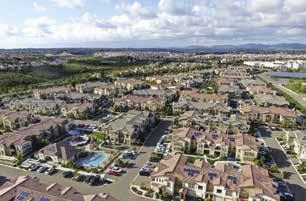



Laurie Poole, Esq., CCAL Adams Stirling
Rachael Robenolt, CMCA, AMS 360 Community Management
Board Member of the Year Veteran (6+ Years)
Lisa Pieropan Villa Mar Homeowners Association
Business Partner of the Year
Amber Antoski EmpireWorks
James Hippolyte EmpireWorks
Tommie Hoyt Procoat Painting San Diego
Robert Hudson Building Resource Management
Pejman Kharrazian Epsten APC
Cassandra Ludden Landscapes USA
JoJo Royden Andre Landscape
Mike Rucke
Alta Roofing & Waterproofing, Inc.
Haley Smith Black Diamond Paving, Inc.

Manager of the Year - Rookie (0-5 Years)
Moriah Amicay Choice Management Solutions
Kyle Black, CMCA Walters Management
Nicole Cummings N.N. Jaeschke, Inc. – An Associa Company
Alysia Dale, CMCA, AMS Property Management Professionals
Kerry Fiedler, CMCA, AMS Walters Management/RealManage
Lucilla Garcia Walters Management
Brandon Garza FirstService Residential
Tracy Hanson Property Management Professionals
Claire Hosking Summit Property Management, Inc.
Kimberly Kizer
N.N. Jaeschke, Inc. – An Associa Company
Anali Martinez Property Management Professionals
Charise McLaughlin
N.N. Jaeschke, Inc. – An Associa Company
Donald Rogers Walters Management
Caitlin Schlussler, CMCA Summit Property Management, Inc.
Sarah Trobaugh, AMS FirstService Residential
Rebecca Warrillow, CMCA Avalon Management Group, Inc.
Manager of the Year - Veteran (6+ Years)
Kierstin Avalos, CMCA Avalon Management Group, Inc.
Leanne Beck, CMCA, AMS, PCAM Avalon Management Group, Inc.
Sara Borek, CMCA, AMS The Prescott Companies
Nafisa Braimah, CMCA, AMS FirstService Residential
Nerissa Damasco FirstService Residential
Elena Egos The Prescott Companies
Ryan Figley, CMCA, AMS Moonstone Management and Consulting
Rachel Garrett Walters Management/RealManage
Chloe Holder, CMCA Avalon Management Group, Inc.
Seantell Marron Professional Community Management
Elle Mondant, CMCA, AMS FirstService Residential

Tina Montalvo, CMCA ARK Management
Brittany Vik, CMCA 360 Community Management
Angelita Villanueva, CMCA, AMS Walters Management/ RealManage
Pamela Walker
The Prescott Companies
Rising Star – Business Partner
Brandon Berce Golden Alliance Insurance Agency, Inc.
Sean Floody Harvest Landscape
Julie Gould Alliance Enviormental Group, LLC
Jackie Heitman Ross Construction Management
Graciela King Santelises CertaPro Painters
Ryan Moldt AD Magellan
Daniel O’Reilly Servpro of San Diego City SW & Centre City/Uptown
Nika Richardson, AMS, PCAM Enhanced Landscape Management
Diana Riggs Proform Interiors
Franky Sesma Parking Squad
Kendahl Stein Flanagan Law APC
Rising Star - Manager
Claire Hosking Summit Property Management, Inc.
Article of the Year
Governing Document Enforcement Basics
Published Summer 2024
Authored by Tyler Kerns, Esq. Kriger & Schuber APC
Community Associations
Published Fall 2024
Authored by Rhonda Goldblatt, Esq. Epsten APC
Board Leadership - Uniting Homeowners for the Common Good
Published Winter 2024
Authored by
Kumar Raja, Esq. Beaumont Tashjian
Educational Program of the Year
Plumbing 102
Amber Korody, CCAM, CMCA Choice Management Solutions
Dan Zastrow
Remedy Rooter
Repair Strategies for Pool Decks
Becky Larson PrimeCo
James R. McCormick, Jr., Esq., CCAL Delphi Law Group, LLP
Christina Mercer, CCAM PMP Management
We Lay Siege at Dawn –Enforcement Strategies
Robert DeNichilo, Esq. DeNichlio Law APC
Marisa McVey, CMCA, AMS
FirstService Residential
Laurie Poole, Esq., CCAL
Adams Stirling






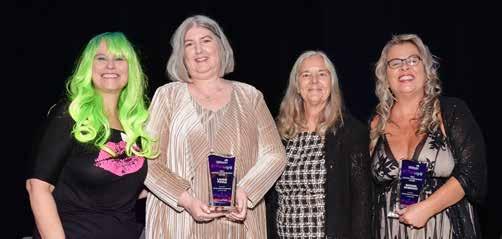
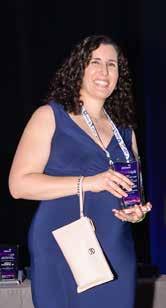
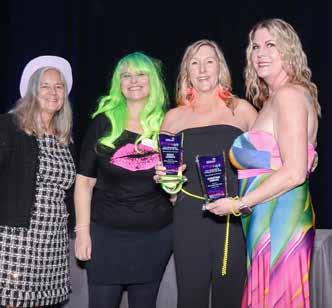




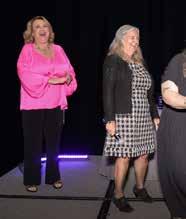



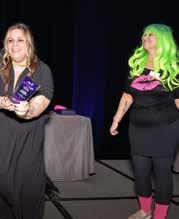
Attendees enjoyed a bright night at the Neon Night Annual Awards Gala held January 25th at the Loews Coronado Bay Resort. Everyone got into the festive party mood with dining, dancing and lots of fun. The evening featured the presentation of the Chapter’s 2024 Service Awards.
Congratulations to all the nominees and award winners!
PRESIDENT’S AWARD
(Photo B)
Emilio Lopez
San Diego Roof Doctor
LIFETIME ACHIEVEMENT AWARD
(Photo A)
Laurie Poole, Esq., CCAL
Adams Stirling
Rachael Robenolt, CMCA, AMS
360 Community Management
ARTICLE OF THE YEAR
(Photo D)
Tiny But Mighty: Managing Legal Compliance for Small Community Associations
Fall 2024 Issue
Authored by Rhonda Goldblatt, Esq.
Epsten APC
BEST EDUCATIONAL PROGRAM OF THE YEAR
(Photo E)
Repair Strategies for Pool Decks
Becky Larson
PrimeCo
James R. McCormick, Jr., Esq., CCAL Delphi Law Group, LLP
Christina Mercer, CCAM
PMP Management
BOARD MEMBER OF THE YEAR
VETERAN (6+ YEARS)
(Photo F)
Lisa Pieropan
Villa Mar Homeowners Association
BUSINESS PARTNER OF THE YEAR
(Photo H)
Amber Antoski EmpireWorks
RISING STAR – BUSINESS PARTNER
(Photo I)
Franky Sesma
Parking Squad
MANAGER OF THE YEAR
ROOKIE (0-5 YEARS)
(Photo C)
Sarah Trobaugh, AMS FirstService Residential
MANAGER OF THE YEAR
VETERAN (6+ YEARS)
(Photo G)
Ryan Figley, CMCA, AMS Moonstone Management and Consulting
RISING STAR – MANAGER
(Photo J)
Claire Hosking
Summit Property Management, Inc.
TITLE SPONSOR

AWARDS DINNER
TABLE SPONSORS
AD Magellan
Andre Landscape
Bemus Landscape
BrightView Landscape Services, Inc.
CM2 & Associates, Inc.
Epsten, APC
Harvest Landscape
Landscapes USA
Park West
The Prescott Companies
Proform Interiors
Pro-Tech Painting
ProTec Building Services
Rayco Exteriors
RealManage
Reconstruction Experts
Ross Construction Management
SERVPRO of San Diego City SW
DRINK TICKET SPONSORS
Berding Weil
Fenton Grant Kaneda & Litt, LLP
Life Specialty Coatings
PrimeCo
WM of San Diego
Western Towing
CENTERPIECE SPONSORS
Alta Roofing & Waterproofing
Associa - NNJ
PMP Management
San Diego Backflow Testing
PARTY FAVOR SPONSORS
The Naumann Law Firm, PC
Servpro of Sorrento Valley
MUSIC SPONSOR
SERVPRO of Sorrento Valley
REGISTRATION SPONSORS
Berg Insurance Agency (in partnership with LaBarre/ Oksnee)
Pacific Backflow Corporation
Precision Construction and Painting
SavATree, LLC
PARKING SPONSORS
BuildingLink
CertaPro Painters
Procoat Painting
PuroClean of Claremont
CLAC SPONSOR
Servpro of Sorrento Valley
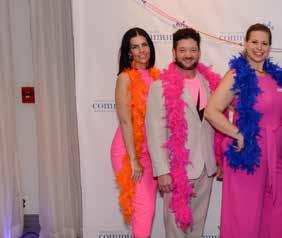
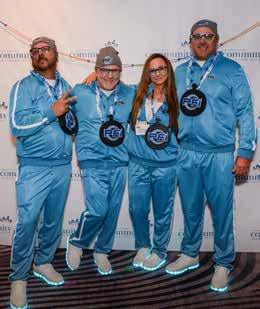











By David Hinrichs

Roof rats are a common nuisance in Southern California residential areas, including in homeowners associations. These pests can cause significant damage to structures, contaminate food supplies, and pose health risks to residents. Effective prevention and control of roof rats are essential to maintaining the safety and comfort of any community.
Prevention is the most effective strategy in managing roof rat populations. By taking proactive measures, homeowners associations can reduce the likelihood of infestations and minimize the need for more aggressive control methods.
Exclusion involves sealing off entry points to prevent roof rats from entering buildings. This can be achieved by:
• Inspecting structures for gaps, cracks, and holes in walls, roofs, and foundations.
• Sealing openings with durable materials such as steel wool, hardware cloth, or concrete.
• Maintaining doors, door sweeps, thresholds and windows to ensure they close tightly.
• Trimming tree branches and shrubs back that provide access to roofs to a minimum distance of three feet.
Trapping is a useful method for controlling small roof rat populations. It involves the use of mechanical traps placed strategically in areas where rats are active. Key points to consider when using traps include:
• Placing traps along walls, in attics, and near food sources.
• Using appropriate attractant, such as peanut butter or dried fruit.
• Regularly checking and resetting traps to ensure effectiveness.
Baiting is an effective component of roof rat control. It involves the use of rodenticide baits to eliminate rat populations.
Pulse baiting is an innovative and strategic baiting technique that involves the use of a non-toxic bait to identify rodent feeding areas. This method ensures that active ingredient baits are only placed in locations where roof rats are actively feeding, increasing the efficiency and safety of the baiting process.
Placement of Non Toxic Bait: Initially, a non-toxic monitoring bait is placed in suspected rat activity areas. This bait is designed to attract rats without posing any harm to humans, pets, and the environment.
Monitoring and Identification: The monitoring bait is monitored over a period to identify feeding patterns and high-activity areas.
Replacement with Active Bait: Once feeding areas are established, the monitoring bait is removed and replaced with an active ingredient bait. This targeted approach minimizes the use of toxic substances and reduces the risk to non-target animals and humans.
Removal of active bait: When rodents stop feeding on the active bait, it is removed and replaced with the monitoring bait.
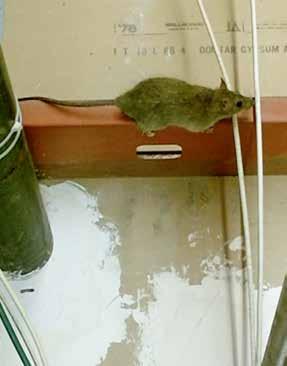
Roof rats pose a significant challenge for homeowners associations, but with effective prevention and control strategies, their impact can be mitigated.
Roof rats pose a significant challenge for homeowners associations, but with effective prevention and control strategies, their impact can be mitigated. Exclusion, trapping, and baiting, particularly through innovative methods like pulse baiting, are essential tools in the fight against these pests. By implementing these measures, communities can protect residential and community structures, reduce health risks, and maintain a high quality of life for all residents. It is always a good idea to
consult with a licensed professional pest management company for pest control concerns.

David Hinrichs is Key Accounts Manager at Lloyd Pest Control and Vice President of California Pest Management Association. He can be reached at david.hinrichs@lloydpest.com.
By Rhonda R. Goldblatt, Esq.
While community association boards might view social media as a free, convenient means of disseminating information to the membership, social media use by associations can be fraught with potential stumbling blocks.
oards may in fact prefer to avoid using social media altogether given the concerns listed below. At the same time, Civil Code § 4515 limits associations’ ability to restrict individual homeowners’ use of social media to discuss association life. In that respect, associations may need to view individual homeowners’ use of social media from a live-and-let-live perspective.
The Loose Canon. Board members may lose their temper, reveal attorney-client privileged information, or otherwise inflame an already volatile dispute when posting or responding to homeowner comments on social media. Online content lives forever, even if subsequently deleted. Ill-considered board member comments can in turn attract defamation claims, sow division, and otherwise negatively affect the association.
Constant Vigilance. Association-run social media pages must be constantly monitored because negative, defamatory, or otherwise ill-advised content may be posted by homeowners, which the association may in turn need to regulate or delete. Homeowners may also post negative content about one another, leading to demands that the association delete such content by the targeted party, putting the association in a tough position. Homeowners may additionally choose to notify the association of important issues via social media rather than contacting management. The resulting need for constant monitoring can be time-consuming and expensive.

WHO LEFT THIS ON MY TRUCK, THIS IS NOT FUNNY I CALLED THE POLICE ON YOU. tHIS IS A VIOLATION OF PRIVACY AND THE FIST AMENDMENT IF I EVER SEE ANOTHER SANDWICH ON MY PROPERT AGAIN I AM GOING TO REPORT YOU TO THE POLICE.
8 3


Sarah
STOP FEEDING CROWS BAGELS. They aren’t eating the bagels you are giving them. They are stashing them in the trees and it’s raining bagels at my house.
1
Is This Covered? Association and board members’ online activities on social media may not be covered by association insurance policies. If an association is sued in connection with online activity, and the claim is not covered, any resulting liability could be financially devastating.
If an association steers clear of social media, shouldn’t homeowners be required to do the same? Under the law, no. Civil Code § 4515(b) states governing documents shall not prohibit a member or resident of a common interest development from “using social media or other online resources to discuss any of the following, even if the content is critical of the association or its governance:”
1. Development living;
2. Association elections;
3. Legislation;
4. Election to public office;
5. The initiative, referendum, or recall processes; or
6. Any other issues of concern to members and residents.
Note that homeowners’ social media posts may be critical of the association. Negativity, whether unfair or
Continued on page 28
On January 17th over 75 Chapter volunteers gathered to kick off 2025. 2024 President Heather Wiltshire, N.N. Jaeschke, and Chapter Executive Director Carissa Mace gave an update on of the Chapter’s strategic plan and an overview on plans for 2025. A lively question and answer session started some great conversations, which the Chapter looks forward to continuing throughout the year. Welcome to the Wild Wild West... Continued from page 27
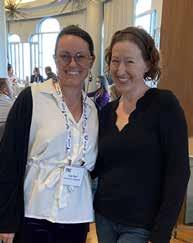
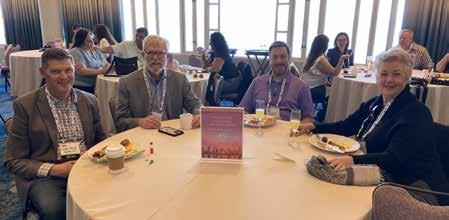
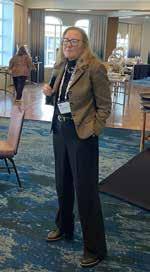

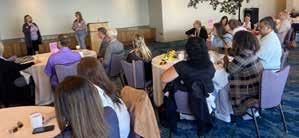
not, does not constitute grounds to regulate homeowner online activity. Further, “development living” and “any other issues of concern to members and residents” are so broad as to effectively serve as catch-all categories, allowing homeowners to freely post about most association-related topics.

So where does this leave community associations? Associations may do well to remember that one of the main purposes of common interest developments is to maintain the common areas. That is, associations serve physical needs (maintenance) in the real world, rather than playing a role online. Given that associations are also limited in regulating homeowner online activity, associations may want to steer clear of the Wild Wild West of social media entirely.

Rhonda R. Goldblatt, Esq. is a Senior Attorney at Epsten, APC and can be reached at rgoldblatt@epsten.com

Held at NTC Park in Liberty Station, the Saturday afternoon Fall Festival featured food, fun and games for the entire family.




THANK YOU TO OUR FALL FESTIVAL SPONSORS!
TITLE SPONSOR
BIG GAME SPONSOR
Advanced Election Services
Platinum Security Inc.
CARNIVAL SPONSORS
A-1 All American Roofing Company
Alta Roofing & Waterproofing, Inc.
PrimeCo
Primus Paint Worx
Procoat Painting
Rayco Exteriors
San Diego Roof Doctor
WM of San Diego
FESTIVITES SPONSORS
Black Diamond Paving
BuildingLink.com, LLC
Mt. Helix Pest & Termite Control
Parking Squad
SavATree, LLC
SERVPRO of Sorrento Valley Synergy Management Group




By Anja Potenza and Michael Lockwood
As the weather gets warmer and your landscape wakes up after winter, it is important to be aware of potential pests that can impact the overall health and beauty of one of your community’s most visible assets –your plants. I sat down with BrightView’s Tree Healthcare Business Developer, Michael Lockwood, recently to discuss a few common springtime pests to keep your eye out for, and what solutions to be aware of.
We started our discussion about the canary date palm, also known as the “Rolls Royce” of trees. Similar to a Rolls Royce, owners of these palms typically pay the highest for tree maintenance in San Diego.
One of the most visible and prevalent pests for palm trees locally is the South American palm weevil. Weevil larvae feed on the crown of the palms which ultimately destroys the tissue. Once that tissue is destroyed, it has trouble producing new fronds; no new growth means it doesn’t have a good chance of survival.
“Due to heavier pesticide regulation, the pest has become more difficult and expensive to control – and technically there is no control, only prevention. Preventing the palm weevil requires the priciest products and four
treatments a year and even then, there is no guarantee with treatments. They have also been known to attack many other palm varieties and even giant bird of paradise,” Michael shared.
He also mentions that aside from the South American palm weevil, there is another ailment that can impact palm varieties in our climate, “If the weevil wasn’t enough to worry about, date palm owners need to be aware of a fungal disease, Fusarium wilt, that is a slow killer. Identification is easy. All one needs to do is look for asymmetrical coloring on the fronds. Despite being incurable, if detected early enough, treatments do wonders at slowing the disease progression and preserving the tree for many years. However, treatments are required annually.”
The agave weevil is another pest to keep an eye out for. Michael explained, “The palm weevil decided to invite his cousin to the party. Enter the agave weevil, palm weevil’s smaller cousin. Previously known for destroying tequila crops south of the border by boring round holes directly into the heart of the agaves until they flop dead on the ground, they also seem to enjoy “false agave” aka

Furcraea, which has become very popular in modern drought tolerant landscapes. Unfortunately, what was a good control and previously available at your local garden center is no longer available in California as of this year. Consult with your local arborist for treatment options.”
If you have additional questions about any pests invading your landscape – reach out to your landscaper or certified arborist for treatment options!

Anja Potenza is a Business Developer for BrightView Landscape Services, Inc. and can be reached at anja.potenza@brightview.com

Michael Lockwood is a Tree Care
Business Developer for BrightView Tree Care Services and can be reached at michael.lockwood@brightview.com

CAI is the foremost authority in community association management, governance, education, and advocacy for the 380,000 homeowners associations, condominiums, and co-ops in the United States and millions of communities worldwide.
As a member of CAI, you are part of a global network of over 45,000 community managers, management company executives, homeowner leaders, and business partners.

COMMUNITY MANAGERS
Elevate your career and increase your salary with tailor-made education and credentials that give you a competitive edge in the growing community association business.
MANAGEMENT COMPANY EXECUTIVES
The best community associations have the best boards –they’re educated, knowledgeable, and prepared to lead their communities successfully. CAI membership provides your board members valuable resources and education to stay informed. Visit cai-sd.org regularly for the latest CAI happenings and information.
Communities count on you for professional management and guidance. CAI membership helps your company boost credibility and increase exposure to potential clients.
HOMEOWNER LEADERS
Save time and money with CAI education and resources and lead your community to success!
BUSINESS PARTNERS
Membership conveys your commitment to the community association industry and the potential for expanding your client base!
MAKE THE MOST OF YOUR MEMBERSHIP
Visit www.caionline.org regularly for the latest CAI happenings and information.
Log in to the CAI website and your profile to ensure all contact information is current so you don’t miss out on CAI news, emails, and other important updates.
Get involved with our chapter – attend an education or networking event and maybe even join a committee, where you can network, learn with peers, or meet potential service providers for your community.
Get involved with your local chapter—attend an education or networking event and maybe even join a committee, where you can network, learn with peers, or meet potential new clients.
By Kelley Grimes, MSW
“Balance is not something you find; it’s something you create.”
-Jana Kingsford





When we are overwhelmed and exhausted, we are out of balance in our lives. When this happens, we have often taken on more responsibility than there is time in the day leaving us chronically stressed and overscheduled. We may find the more we give without filling back up, the more imbalanced we feel. Over time, this unsustainable pattern leads to illness, burnout, and a lack of meaning in our lives.

























































If we are searching for work/life balance, we may not recognize that we actually need to create it. To develop more balance, we need to choose to nurture ourselves and cultivate self-compassion, self-awareness, and intentional choices of how we spend our time. Recognizing we have choice is essential to cultivating balance in our lives.
Here are three empowering self-nurturing practices to create more balance:
One of the most impactful self-nurturing practices to create balance is to release expectations of perfection and embrace a growth mindset. Unrealistic expectations of yourself feed a pattern of overworking and causes conflicting priorities at work and home. When you embrace a growth mindset, you allow mistakes to turn into lessons and find self-compassion and self-acceptance. To embody this practice, repeat the phrase “progress not perfection” and find the lesson in every challenge.















When you feel out of balance with your overflowing work and life calendars, it is usually because you need to let something go. This letting go can come in the form of decluttering your home or office, schedule, negative thoughts, responsibilities, and/or expectations. Every time you set a boundary and say no to activities that no longer bring you joy you create more balance in your life. Reflecting regularly on what you need to let go of to cultivate more balance can be empowering and clarifying. Start by choosing one thing to let go and reflect on the space opened in your life. As Betsy Jacobson wrote, “Balance is not better time management, but better boundary management. Balance means making choices and enjoying those choices.”








































When you are overwhelmed and live from a place of busyness, you often move onto the next item on your overflowing to do list without pausing to celebrate your completion or success. When you don’t acknowledge yourself, you devalue your efforts, miss your growth, and often feel stuck in the doing without feeling a sense of purpose or meaning. Being intentional about acknowledging yourself can deepen your gratitude practice, increase your confidence in yourself, and support a more balanced life. Begin an acknowledgement and gratitude practice today.

Kelley Grimes, MSW is a counselor, speaker, and author who can be contacted at kelley@cultivatingpeaceandjoy.com

By Elizabeth A. French, Esq.
In California the law recognizes an employee’s right to enjoyment of a safe and healthy workplace in discharging day to day duties at work. California has recently enacted some new laws to ensure that employers are proactively protecting their employees. What is workplace violence? It is defined as any act of violence or threat of violence that occurs in a place of employment. The law breaks the violence down into four categories. The first is criminal intent - a person approaches the workplace with the intent to commit crime like retail robberies or threats to security guards. The second category is violence directed at employees by customers, clients, patients, students or visitors. The third type is violence against an employee by a present or former employee, supervisor or manager. The fourth is violence committed by a person who does not work there but has a personal relationship with an employee. Beginning July 1, 2024, California employers were required to develop and adopt a written workplace violence prevention plan, train employees and supervisors on workplace violence matters, create and maintain violence incidence logs, and retain records of all associated training. This law
applies to most public and private employers in California including qualifying common interest developments. However, there are exemptions. Smaller employers with less than ten employees present at the same time are exempt, but those employers must have a compliant injury and illness prevention plan. Telecommuting employees that work from a location of their choice are exempt. Certain healthcare facilities and law enforcement agencies are also exempt.
Failure to comply with this new law could result in a misdemeanor violation pursuant to Labor Code Section 6401.9(g). This article is not intended to comprehensively cover all of the requirements, rather it is intended to simply apprise employers of their obligations and provide an overview. Employers can find in depth information about the new law’s requirements at California’s Department of Industrial Relations, www.dir.ca.gov. A number of other websites have popped up with legally compliant programs designed to assist employers with implementing the new law with forms and training programs.
In order to comply with the new law, employers need to make a written Workplace Violence Prevention Plan (WVPP) that is easily accessible to all employees. In general, the WVPP must identify who is responsible for implementing the plan and have effective procedures for doing so. Employers should involve employees and their authorized representatives in developing the plan. The plan must require employers to respond to reports of workplace violence, prohibit retaliation against employees reporting acts of violence, ensure supervisors and non-supervisors comply with the plan, provide for communication
about violence incidents, and outline the investigative procedure that will be used. It must further provide for training, procedures for identifying hazards, and procedures for timely correction, post-incident response and investigation and finally, the effectiveness of the plan must be evaluated and revised as warranted.
Next, employers are also required to train employees when the plan is implemented, and then annually thereafter. The training must cover the WVPP and inform employees about how to obtain copies of it, inform employees how to report violent incidents, identify hazards that are specific to each employee’s work environment, identify corrective measures, advise how to seek assistance to prevent or respond to violence while avoiding physical harm, and finally inform the employees about the log and how to get copies of the log.
Employers must record all incidents of violence in detail (who, what, where, when, and why) but without personal identifying information of the person providing the information for a log. Further, the classification of the circumstances and location of the incident must be included, the type of violence, consequence of the incident (was law enforcement called?), the name as well as job title of the person making the log entry and the date the entry was completed. Finally, all associated records (log and training records) must be maintained and made available to employees upon request within fifteen days.
There is also a new law that went into effect on January 1, 2025, that makes it easier for employers to obtain a workplace restraining order on behalf of their employees. This law applies to all common interest developments with employees.

Continued from page 35
The previous law allowed California employers to seek restraining orders on behalf of employees and their families where there was workplace violence or credible threats of violence. The new law expands this protection to now allow employers to seek protection orders for employees who have been harassed. The new law defines harassment as knowing and willful conduct that seriously alarms, annoys or harasses a specific person that serves no legitimate purpose and would cause a reasonable person to suffer substantial emotional distress and must actually cause substantial emotional distress. The legislature does not want employers to have to wait until things escalate into violence before allowing the employer to seek an order of protection. As such, these changes permit an employer to act sooner than they could under prior law. So, the good news is California is expanding protections for employees so that everyone feels safe and healthy in their places of work. However, at the same time employers need to be aware of these changes and ensure compliance as well as the ability to take advantage of these enhanced worker protections.

Elizabeth A. French, Esq. is a partner at Green, Bryant and French, LLP and can be reached at efrench@gbflawyers.com

The November 7th San Diego Education Luncheon and Trade Show featured the always popular Legal Update and Almost Free Legal Advice. The panel featured Louie A. Brown, Jr., from Kahn, Soares & Conway, LLP and CLAC Advocate, Matthew Plaxton, Esq., Tinnelly Law, and Rob Ward, Esq., Adams Stirling, PLC. The panel gave an overview of industry legislative issues as well as a lengthy question and answer session featuring hot industry topics.

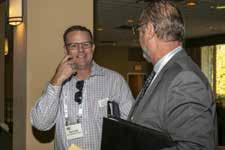
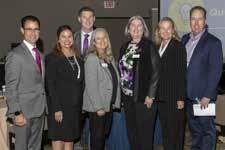
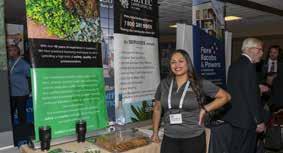
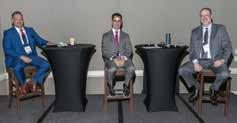

THANK YOU TO OUR EVENT SPONSORS!

Accurate Termite & Pest Control
Agricultural Pest Control Services
Alliance Association Bank
Alta Roofing & Waterproofing, Inc.
Apex Contracting & Restoration
Aztec Landscaping, Inc.
BrightView Landscape Services, Inc.
Costa Roofing
Delphi Law Group, LLP
Fiore Racobs & Powers, A PLC*
Flanagan Law, APC*
Golden Alliance Insurance
Goldstar Asphalt
GuardTop
Harvest Landscape Enterprises Inc.
Hotwire Communications
Monarch Landscape Companies
Nissho of California, Inc.
NPG Asphalt
Parking Squad
Pilot Painting & Construction
Precision Concrete Cutting
Precision Painting and Reconstruction
Rayco Exteriors
Reconstruction Experts
Riley Pasek Canty LLP
RSI Roofing
S.B.S. Lien Services
The Secret Ballot
SmartStreet Powered by Banc of California
Soundproof San Diego
Third Party Voting
Tinnelly Law Group*
Vista Paint Corporation
Western Towing
RESERVED TABLE SPONSORS
Berding Weil
Pro-Tech Painting
SERVPRO San Diego City SW
PHOTOGRAPHY SPONSOR
CertaPro Painters
EDUCATION SPONSORS
Life Specialty Coatings
San Diego Roof Doctor
NETWORK SPONSORS
Adams Stirling
Bemus Landscape
Berg Insurance Agency
The Naumann Law Firm, PC
Southern Cross Property Consultants
CLAC SPONSORS
LaBahn’s Landscaping
McCormick-JWC Construction & Consulting
Structural Preservation Systems, LLC
CAI SAN DIEGO


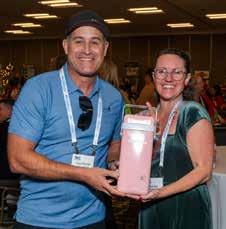
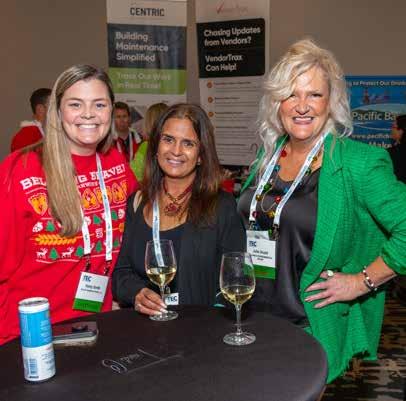



EXHIBITORS (*CLAC upgrade
Sponsors)
Accurate Termite & Pest Control
AD Magellan
Agricultural Pest Control Services


PHOTOGRAPHY SPONSORS
PuroClean of Claremont
Teel Painting
Drink Ticket Sponsors
Alliance Environmental Group
Black Diamond Paving
Life Specialty Coatings
Pilot Painting & Construction
COFFEE BAR SPONSOR
Pacific Green Landscape, Inc.
HOLIDAY NETWORK SPONSORS
Antis Roofing and Waterproofing
Apex Contracting & Restoration
Atlas Tree Services
Behr Paint
Berding Weil
Berg Insurance Agency
EmpireWorks Reconstruction
JJ&S Environmental Services
Monarch Landscape Companies
The Naumann Law Firm, PC
RealManage
Reconstruction Experts
Riley Pasek Canty LLP
San Diego Roof Doctor
PARKING SPONSOR
PrimeCo
CLAC SPONSORS
LaBahn’s Landsaping
Modern Pipe Solutions, Inc.
Pro-Tech Painting
West Coast Drywall & Paint
Andre Landscape Service
Ascent Roofing
Aztec Landscaping, Inc.
Bald Eagle Security Services, Inc.
Bear Flag Waterproofing and Restoration
Bemus Landscape
BrightView Landscape Services, Inc.
California Premier Roofscapes
Centric Building Services, Inc
Chapman & Intrieri, LLP
Click2bind Insurance Services
CM Squared, Inc.*
Costa Roofing
Dunn Edwards Corporation
Enhanced Landscape Management*
Fenton Grant Kaneda & Litt, LLP
Fiore Racobs & Powers, A PLC
First Citizens Bank
Flanagan Law, APC*
Generation Contracting & Emergency Services, Inc.
Golden Alliance Insurance
Goldstar Asphalt Products
Gothic Landscape
Harvest Landscape Enterprises Inc.
Horizon Lighting
Kings III
Kriger Law Firm*
Life Deck Coating Installations
Major League Pest
MC Contracting
McKenzie Mena, LLP
Mt. Helix Pest & Termite Control
Nautilus General Contractors
Nissho of California, Inc.
NPG Asphalt
O’Connell Landscape
Pacific Backflow Corporation
Park West
Parking Squad
Precision Concrete Cutting
Precision Door Services
Precision Painting and Reconstruction
Premier Roofing CA, Inc.
Procoat Painting San Diego
Rayco Exteriors
Roseman Law*
RSI Roofing
S.B.S. Lien Services
SAX Insurance Agency
SERVPRO San Diego City SW
SmartStreet Powered by Banc of California
Solid Property Services
Teel Painting*
Tinnelly Law Group*
Vista Paint Corporation
Western Fire Protection
Western Towing

In December, the Community Outreach Committee held its Annual Holiday Essentials drive supporting the Youth Assistance Coalition (YAC). Industry came together to help homeless youth in San Diego and improve their lives on the streets. The goal was to help YAC replenish their supplies so they can continue to provide necessities to kids that need a hand-up, not a handout. The donations topped last year’s total and there was tremendous attendance from the Community Outreach Committee to sort and pack away the donations at the YAC facility.

